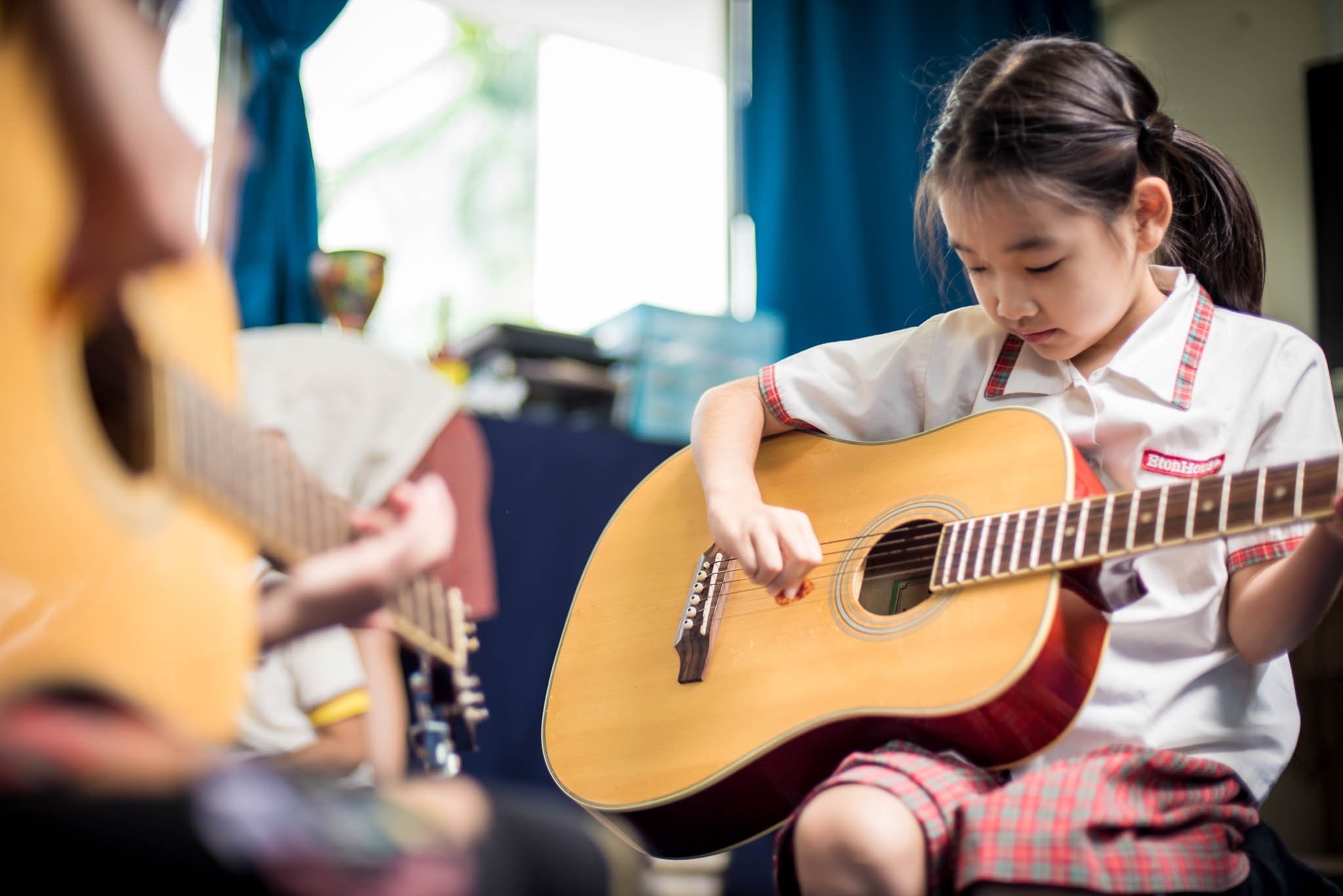Nurashlinda Bte Abu Bakar
Reading, writing, speaking and counting are important skills for children to pick up. But did you know that music is just as important for a developing child?
Because of its beat and rhythm — things that are also present in walking and talking — music has many benefits for children from auditory skills, to fine motor skills, sense of rhythm and body awareness. It even helps them learn hand-eye coordination!
Music is also a very fun way to learn. Children grow in confidence as they learn how to master basic beats on instruments. Then as they learn more intricate patterns and rhythms, they are unknowingly developing their memory and listening skills. It doesn't even seem like work!
Beyond the hard skills, music also encourages artistic expression which may not always be present in the maths and sciences. Children grow emotionally, socially, creatively, and cognitively through spontaneous music, movement, and drama. As we support children's innate desire to create, express, and perform, we build on their natural curiosities, spark their imaginations, and provide opportunities for verbal and physical expression.
Higher-order thinking skills, such as analysis, synthesis, and evaluation, are also developed through activities that promote self-expression. Through the performing arts, children feel free to create and re-create themselves at will. They try on feelings, expressions, and different ways of being. In doing so, they learn more about who they are and about others as well. By exploring other points of view, children learn compassion for others and gain a sense of connection to the world.
To give your child a musical boost without splashing out on instruments, try these four activities at home.
Activity 1: Make your own instruments
Search the house for potential music making material or make your own instruments. Glass jars with lentils or pulses make great maracas, while toilet rolls, tin foil and cotton wool can be used for microphones. Recycle!
Activity 2: Dance-a-thon
You can't beat that amazing sense of freedom that comes with letting go and dancing to music. Make it even more fun by setting challenges like dancing for five minutes on the spot, or hold a competition to come up with the funkiest dance move.
Activity 3: Musical stories
Telling tales through music adds a new dimension to storytelling. The likes of Five Little Ducks and Incey Wincey Spider are just as popular with children now as they were in your childhood. And the fun lyrics and simple rhythms make them easy to remember.
Activity 4: Write your own songs
Another good way to enjoy musical stories is to make some new songs of your own. You can use the rhythm and beats of well known songs and add your own lyrics or sit down and come up with an entirely new beat together. Your child can decide what the song will be about and you can create the fun lyrics together.

